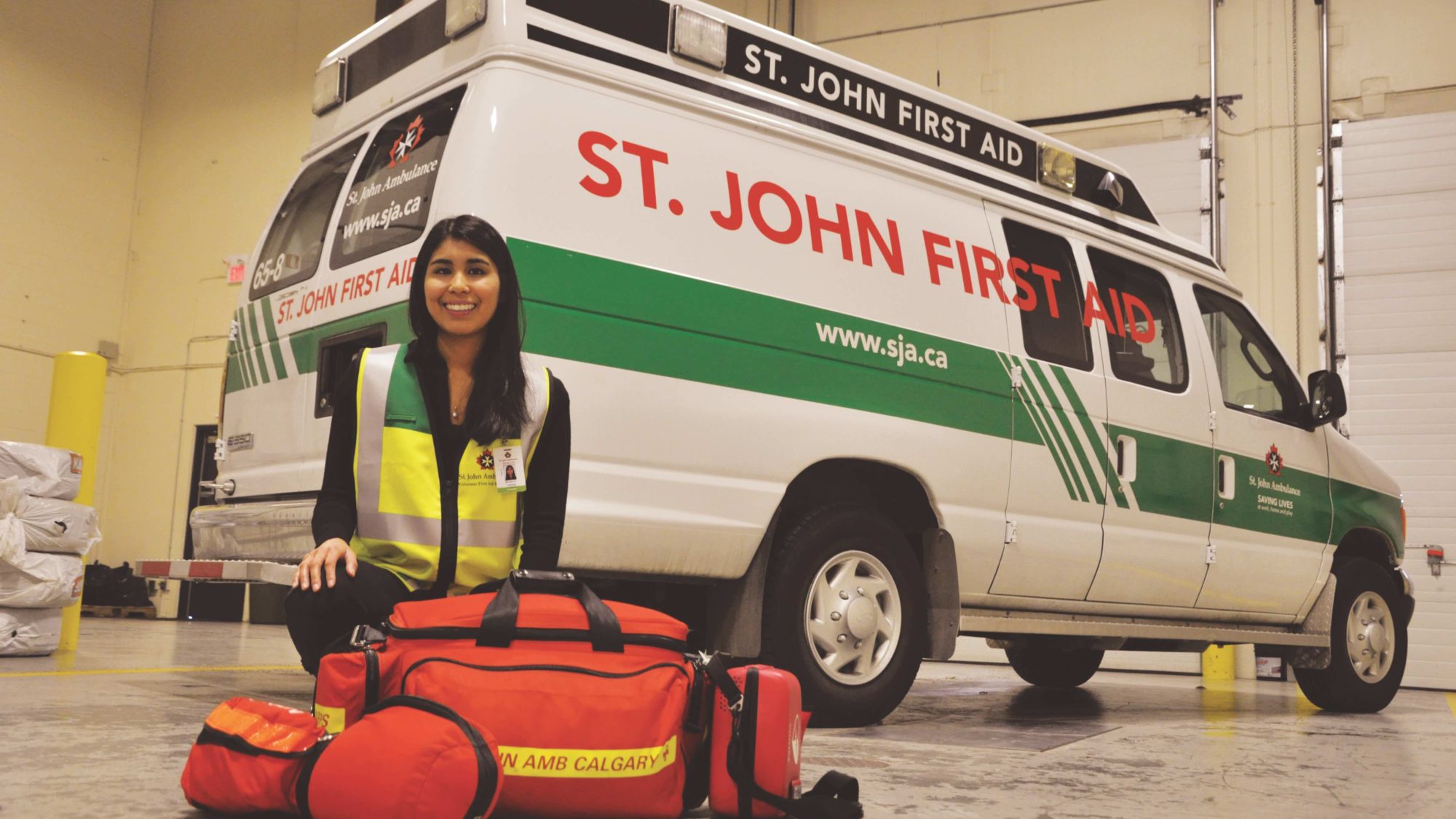Road safety is AMA’s top priority—whether that means supporting school safety patrols or training high-mileage fleet drivers to keep themselves and others safe on the province’s streets and highways.As one of several support services available to organizations in Alberta, AMA’s Fleet Safety training courses are designed to instill good driver behaviour, improve skills and confidence, and reduce the risk of collisions. They’ve been taken by drivers for numerous companies in Alberta, including ATCO, Pembina, Finning, Cenovus, Shell Canada, Fireball Equipment and Reliance Home Comfort.
Recently, AMA worked with St. John Ambulance Alberta Council to train new emergency medical responder (EMR) ambulance drivers. AMA tailored a week of instructional courses to meet the needs of trainees in Grand Prairie and Fort McMurray, combining its highly regarded driver-training curriculum with modules specific to ambulance operations. AMA’s Alberta Paramedic Driver Operating Course (APDOC) is approved by the Alberta College of Paramedics.
“We worked closely with AMA to build a program tailored to exactly what we need for our EMR students,” says Stacey Savage, manager of training and community services for St. John Ambulance Alberta Council. “The trainees find it very valuable, especially driving with an instructor who coaches and guides them. They get used to working in an emergency vehicle that handles differently and has many more blind spots than their everyday vehicle.”
Of course, before they get on the road, St. John Ambulance students start learning in the classroom. Their training begins with the Proactive Defensive Driver Course (PDDC), an eight-hour classroom session that covers all aspects of safe driving.
“As well as rules and regulations, we think about driver behaviour and attitude to get the mindset right,”explains John Sibbons, a senior instructor with AMA Driver Education. “We also discuss the SIPDE principal for safe driving: Search well ahead; Identify the hazards; Predict what could happen; Decide what you’re going to do; and Execute to make adjustments.”
Sibbons also notes that for students who have previous driving infractions, passing the PDDC enables them to remove three demerit points from their driver’s abstract, giving them a better record when they start work.
COMFORT AND CONFIDENCE
Advanced Vehicle Control (AVC) is another pillar of the APDOC program. The fundamentals of vehicle handling and emergency manoeuvres are explored in the classroom, on the road and at a dedicated track.
“It helps the students to feel more comfortable with the vehicle, as ambulances are higher, more top-heavy vehicles than most people are used to,” says Sibbons. “With AVC, the students learn to maintain good control at different speeds while braking, steering and accelerating.”
At track-based sessions, experienced AMA instructors lead students through the manoeuvres on gravel to simulate rural-road conditions—because there’s a greater chance of losing control than on paved roads.
“Students get a feel for the dynamics of the vehicle on the gravel road, so that they become more confident in the way it handles,” he adds. “That helps them to be better drivers in a high-stress situation, such as with an injured person in the back.”
Another aspect of the training focuses on backing up, to familiarize students with the bulky ambulance’s many blind zones. These are conducted in the classroom and on track, as well as with AMA’s Roadbot driving simulator. There’s also a training component specific to ambulance operation, which goes far beyond a regular vehicle walkaround due to the ambulance’s extensive list of equipment.
AT YOUR SERVICE
Savage points out one more big advantage: AMA’s experts go wherever they’re needed. “We put anywhere from six to 12 students in our EMR cohorts,” she says. “Travelling to Edmonton for five days is just not feasible for many of these groups.”
AMA has a range of fleet driver safety courses that can be accessed individually or in bespoke packages, as St. John Ambulance has done. Collision Avoidance is the most popular module with Alberta companies, whether their drivers are racking up kilometres behind the wheels of sedans or heavy trucks.
The training courses are part of AMA’s expanded portfolio of services to support vehicle fleets. Corporate registry services are now available through dedicated fleet specialists at local AMA centres. The organization also offers help with driver abstracts, recruitment and onboarding, fleet maintenance through AMA’s Approved Auto Repair Service (AARS) shops, and offers commercial auto insurance policies through AMA Insurance.
VIRTUAL WORLD
Roadbot is AMA’s simulator training tool, enabling students to carry out repeatable exercises—and be observed by instructors—under controlled conditions. Students drive in a real vehicle cockpit but on digital roads with computer-generated traffic. Motion cues to match the visuals on screen to immerse trainees in the virtual environment. “It’s not a video game but nobody gets hurt if you crash,” AMA’s John Sibbons says. “People tend to drive the same way as they do on the road, so we can easily see if they’re tailgating, for example, or failing to check their blind zone before making a turn.”
